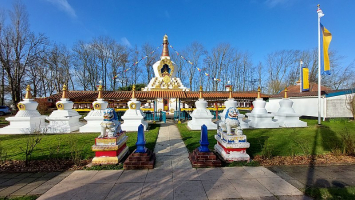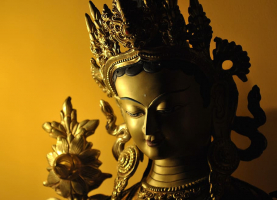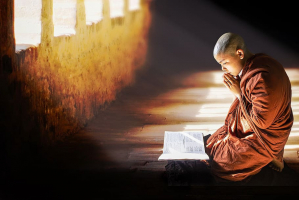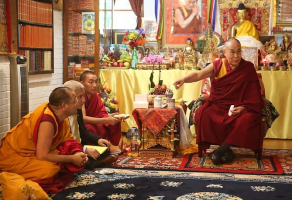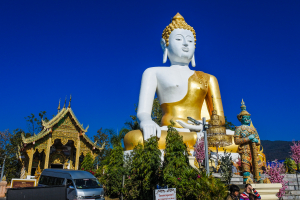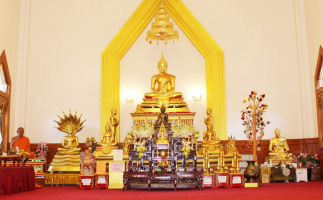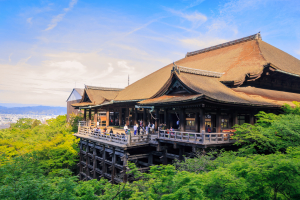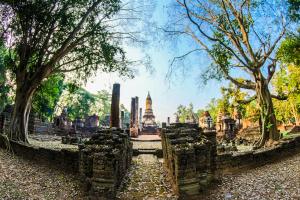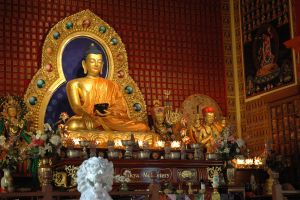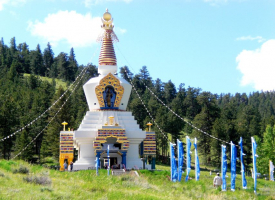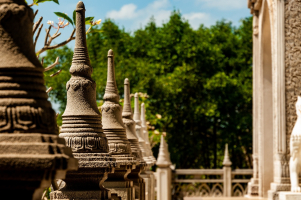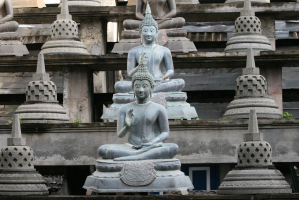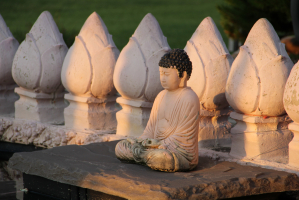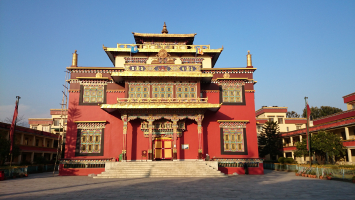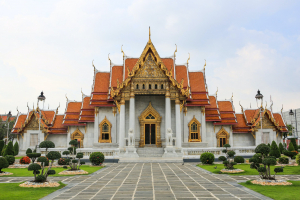Top 15 Most Popular Buddhist Symbols
Have you ever heard the most popular Buddhist symbols? Join Toplist to explore the meanings behind beloved Buddhist symbols, where ancient stories come to ... read more...life. From the gentle lotus to the sacred Dharma wheel, let these symbols be your guides on a personal exploration of wisdom, peace, and enlightenment.
-
The Dharma Wheel, also known as the Dharmachakra, is a widely recognized symbol in Buddhism, representing the teachings of the Buddha and the path to enlightenment. It is often depicted as a wheel with eight spokes. It symbolizes the Noble Eightfold Path, which outlines the ethical principles and practices that lead to liberation from suffering.
The Dharma Wheel is said to have originated from Gautama Buddha's first sermon, delivered at Sarnath, India, after his enlightenment. In this sermon, he explained the Four Noble Truths, which summarize the nature of suffering, its causes, the cessation of suffering, and the path to liberation from suffering.
Moreover, the Dharma Wheel holds deep significance in Buddhism, representing the Buddha's teachings, the cyclical nature of existence, and the continuous process of learning and spiritual growth. Each of the eight spokes of the Dharma Wheel symbolizes a crucial aspect of the Noble Eightfold Path.
The Dharma Wheel serves as a constant reminder of the Buddha's teachings and the path to enlightenment. It is often seen in Buddhist temples, monasteries, and personal meditation spaces, encouraging practitioners to reflect on the teachings and strive for spiritual growth.
The Dharma Wheel is one of the most popular Buddhist symbols. It is often used as a decoration in temples and monasteries, and it is also worn by some Buddhists as a symbol of their faith. The Dharma Wheel is a reminder of the Buddha's teachings, and it is a source of inspiration for Buddhists all over the world.
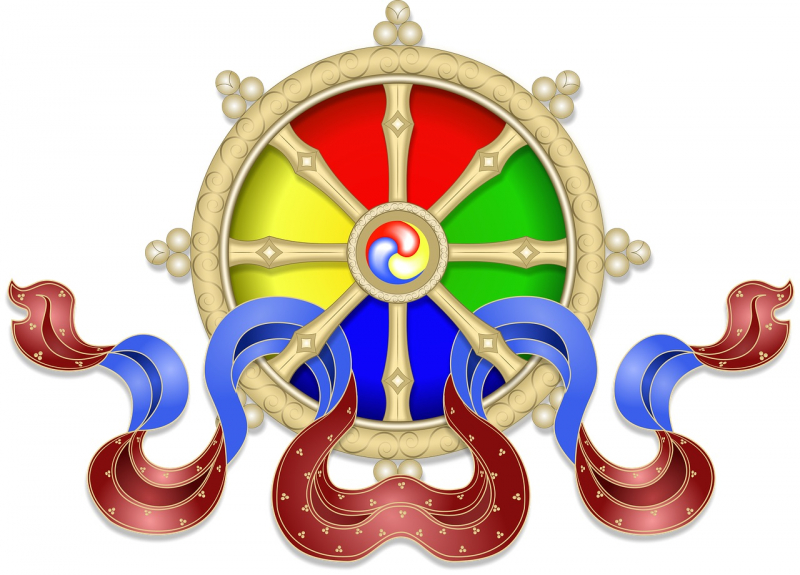
Photo by https://www.needpix.com/photo/857268/buddhist-dharma-wheel-free-pictures-free-photos-free-images-royalty-free 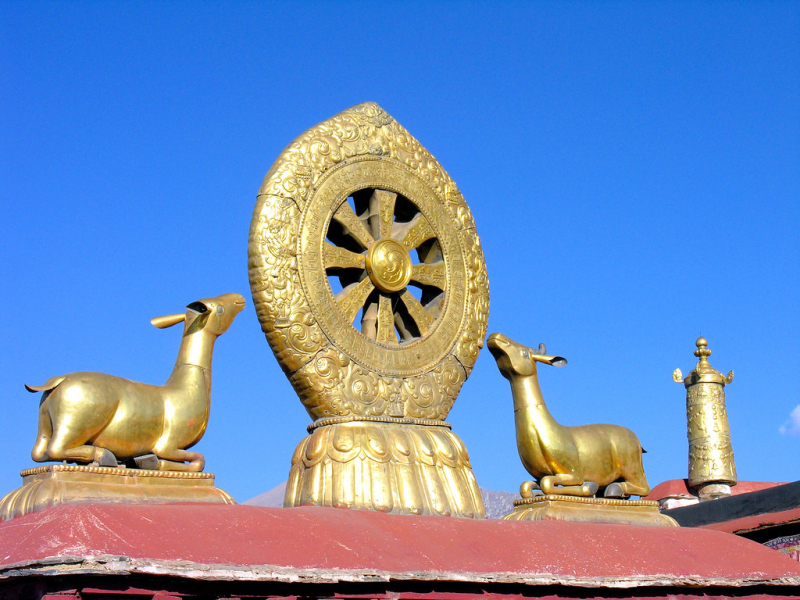
Photo by https://www.flickr.com/photos/archer10/2611076664 -
The lotus flower, with its radiant beauty emerging from the murky depths, holds profound symbolism in Buddhism. It represents purity, enlightenment, and the potential for spiritual transformation, embodying the essence of the Buddha's teachings.
Emerging from muddy waters, the lotus flower remains unblemished, its petals untainted by the dirt and impurities surrounding it. This symbolizes the ability of the human mind to transcend the defilements of the world and attain a state of purity and clarity.
The lotus flower's gradual unfolding, from bud to bloom, mirrors the process of spiritual awakening. Just as the flower rises towards the sun, seeking the light, the enlightened mind reaches for wisdom and liberation from suffering. The lotus flower's journey from mud to blossom signifies the transformative power of the Buddhist path. Just as the lotus transforms its environment, creating a haven of beauty amidst the mire, the practice of Buddhist teachings can transform our lives, leading us from ignorance to enlightenment.
The lotus flower plays a central role in Buddhist iconography, often depicted at the base of Buddha statues or as a pedestal upon which they sit. It is also found in mandalas, symbolic representations of the universe, symbolizing purity, wisdom, and the potential for enlightenment.
In summary, the lotus flower is a profound symbol in Buddhism, representing purity, enlightenment, and the transformative power of spiritual practice. It serves as a source of inspiration and a reminder of the potential for spiritual growth within each individual.
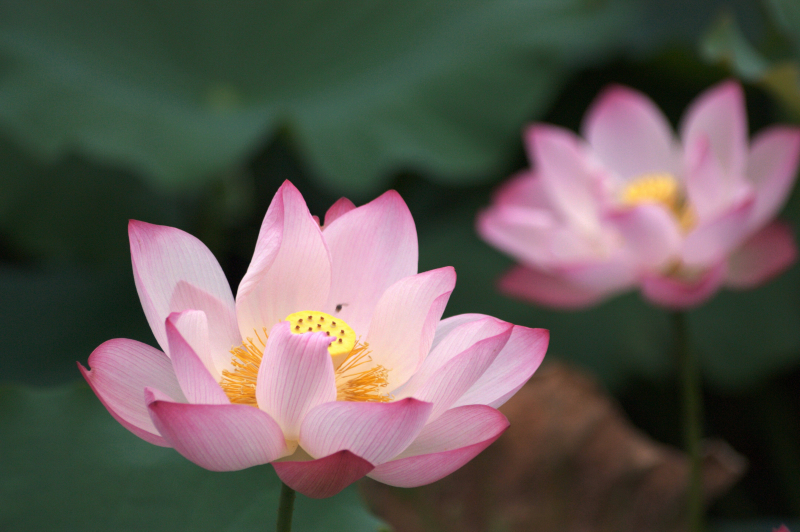
Photo by https://pxhere.com/en/photo/1401840 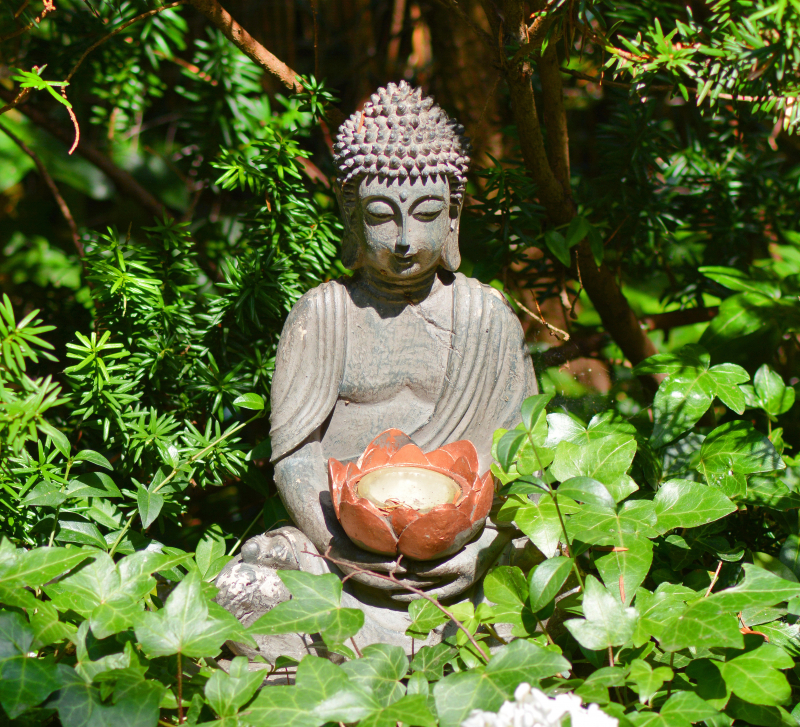
Photo by https://pxhere.com/en/photo/589068 -
The Bodhi Tree, also known as the Bo Tree, is a sacred fig tree (Ficus religiosa) that holds immense significance in Buddhism. It is under this tree that Siddhartha Gautama, the spiritual teacher who became known as the Buddha, attained enlightenment (bodhi) around 500 BCE.
Sitting under the Bodhi Tree, Siddhartha meditated intensely and reached a state of profound understanding, becoming the Buddha. Since then, the tree has held immense significance as a symbol of enlightenment, wisdom, and spiritual transformation. In various Buddhist traditions, artists depict the Bodhi Tree in paintings and sculptures, symbolizing the awakening of the human spirit and the potential for growth and enlightenment.
The Bodhi Tree holds profound symbolism in Buddhism. It represents the Buddha's enlightenment, the ultimate goal of Buddhist practice. It also symbolizes the potential for awakening and spiritual transformation within all beings. The tree's resilience and ability to flourish in a challenging environment serve as a reminder of the enduring power of the Buddha's teachings.
Buddhists regard the Bodhi Tree as a place of pilgrimage and meditation, seeking inspiration and enlightenment through its association with the Buddha's awakening. Devotees come to Bodh Gaya to meditate under the tree, seeking inspiration and guidance on their spiritual path. They also offer prayers, circumambulate the tree, and make offerings of flowers, incense, and candles.
The Bodhi Tree has been depicted in Buddhist art for centuries, often appearing in paintings, sculptures, and murals. It is also a popular motif in traditional Indian handicrafts and textiles. The tree's image has spread far beyond India, becoming a recognizable symbol of Buddhism worldwide.
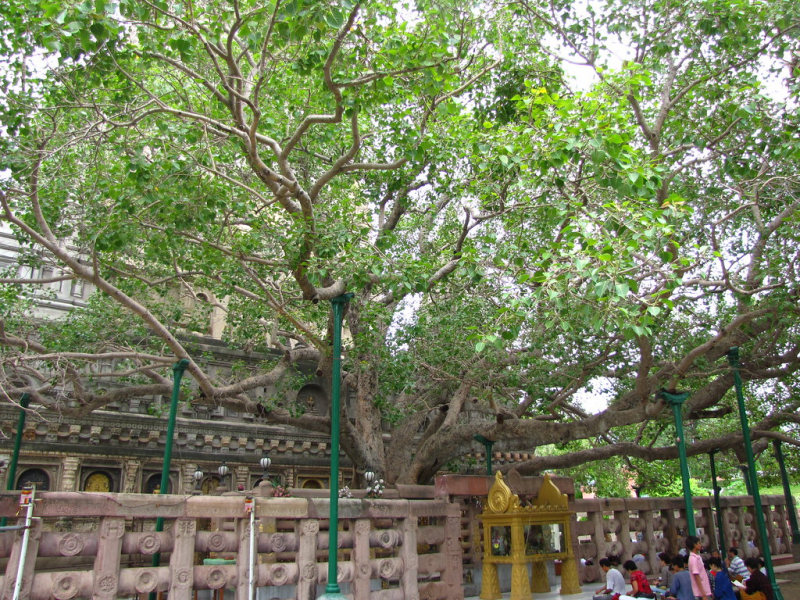
Photo by https://www.flickr.com/photos/manbartlett/3731121819 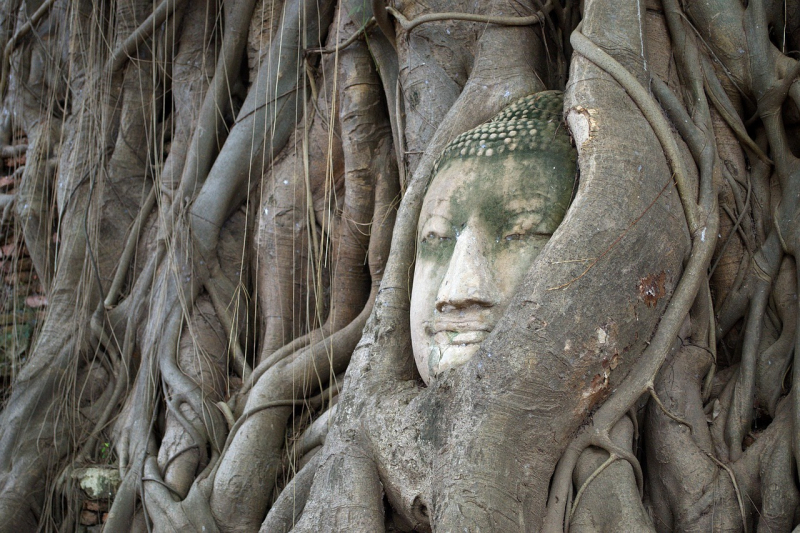
Photo by https://www.needpix.com/photo/752010/head-of-god-bodhi-tree-ayutthaya-tourism -
The footprints of the Buddha, known as Buddhapadas, are revered as sacred symbols representing the Buddha's presence, teachings, and the path to enlightenment. These imprints, often depicted in stone or metal, bear distinctive marks and patterns that hold profound significance for Buddhists worldwide.
Buddha's footprints are seen as a physical manifestation of the Buddha's presence, even in his absence. Devotees believe that paying reverence to these imprints brings blessings, wisdom, and protection from suffering. This symbol symbolize his teachings, the Dharma, and the path to enlightenment. Each step represents a step towards liberation from suffering and the attainment of Nirvana.
At the center of the Buddha's footprint is often a Dharma wheel, representing the Buddha's teachings and the cycle of rebirth and enlightenment. The sole of the footprint may bear 108 auspicious symbols, each representing a positive quality or attribute. These symbols are said to bring blessings and enhance spiritual development. The Buddha's toes are depicted as equal in length, symbolizing his perfect balance and the attainment of the Four Immeasurables.
The Buddha's footprints serve as powerful reminders of the Buddha's teachings, the path to enlightenment, and the impermanence of all things. They continue to inspire and guide Buddhist practitioners on their journey towards spiritual liberation.
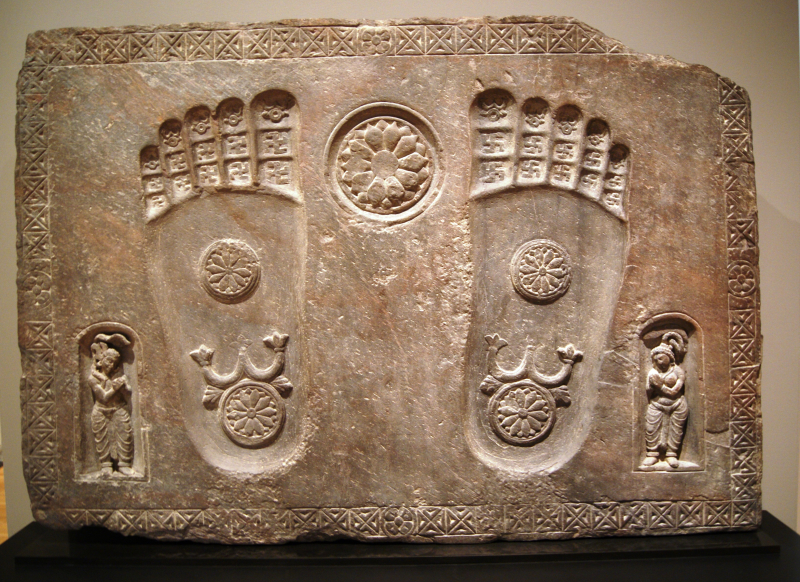
Photo by https://commons.wikimedia.org/wiki/File:Footprints_of_the_Buddha_%282nd_century,_Yale_University_Art_Gallery%29.jpg 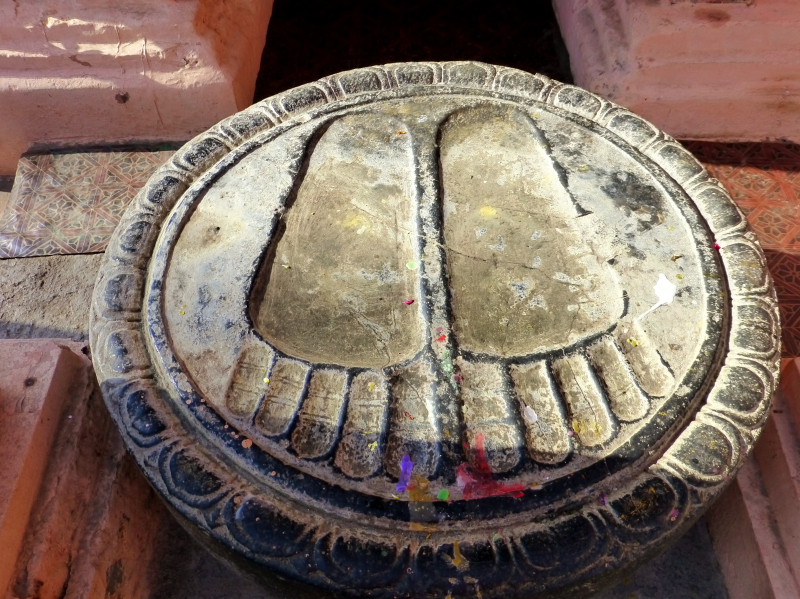
Photo by https://commons.wikimedia.org/wiki/File:013_Siripada_%28Buddha%27s_Footprints%29_%289222192156%29.jpg -
A stupa is a mound-like structure that serves as a monument to the Buddha, revered teachers, or relics of the Buddha. Stupas are widely found in Buddhist countries around the world, and they hold profound symbolic significance for practitioners.
The stupa's architecture represents the five elements of earth, water, fire, air, and space. The circular base symbolizes earth, the hemispherical dome represents water, the mast symbolizes fire. The finial symbolizes air, and the empty space within the stupa symbolizes space. The stupa's three levels represent the Three Jewels of Buddhism: the Buddha, the Dharma (his teachings), and the Sangha (the community of monks and nuns).
The stupa's form is said to resemble the Buddha's body in meditation posture, and it symbolizes the path to enlightenment. The base represents the foundation of morality, the middle section represents the accumulation of wisdom, and the top section represents the attainment of liberation.
Stupas often contain relics of the Buddha, such as fragments of bone or teeth, or relics of revered teachers. These relics are considered sacred and are believed to bring blessings and inspiration to those who venerate them.
Stupas stand as powerful symbols of the Buddha, his teachings, and the path to enlightenment. They serve as sacred sites for pilgrimage, meditation, and spiritual reflection, nurturing the aspiration for liberation. And it also guides Buddhist practitioners on their journey towards awakening.
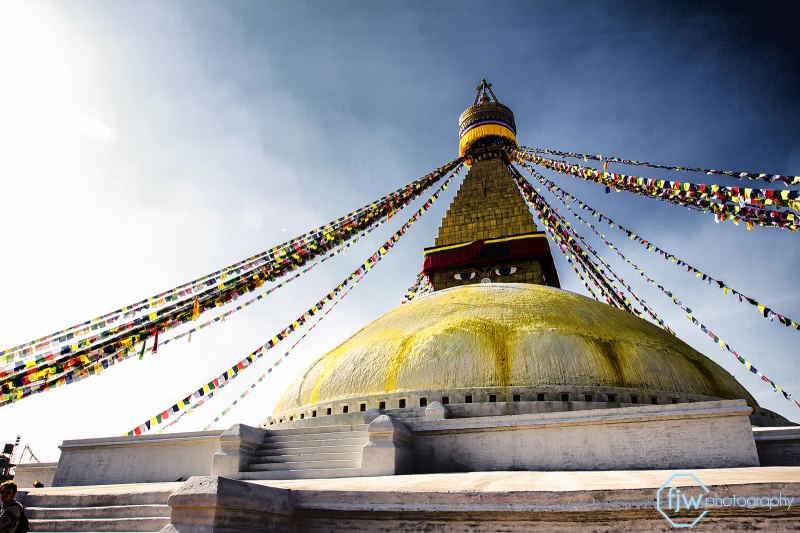
Photo by https://www.worldhistory.org/stupa/ 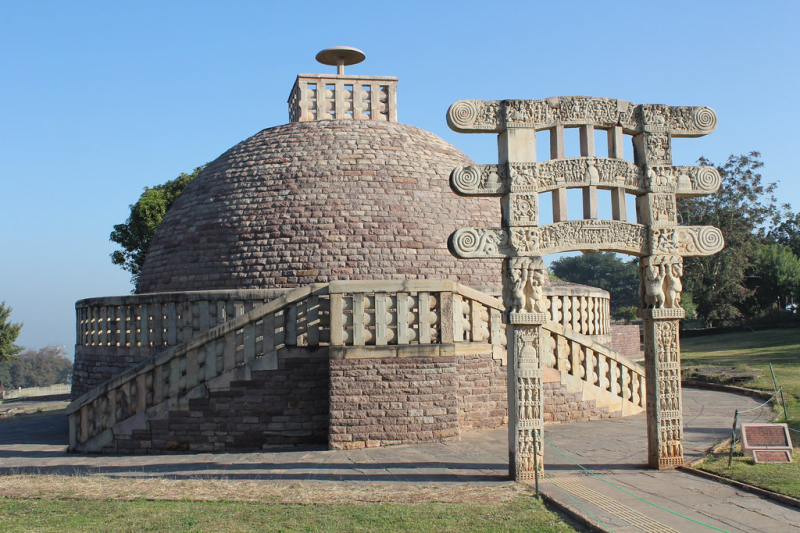
Photo by https://www.flickr.com/photos/azwegers/9840063416 -
The Three Jewels, also known as the Triple Gem or the Three Treasures. Three Jewels are the Buddha, the Dharma, and the Sangha. They are considered the most precious and sacred objects in Buddhism, and they represent the three essential elements of the Buddhist path.
The Buddha is the awakened one, the one who has seen the truth of reality and is free from suffering. He is the founder of Buddhism and the source of the Dharma. The Dharma is the Buddha's teachings, the path to enlightenment. It is the truth of reality that the Buddha discovered, and it is the guide to liberation from suffering. The Sangha is the community of monks and nuns who follow the Buddha's teachings. They are the keepers of the Dharma and the living embodiment of the Buddha's teachings.
The Three Jewels are considered to be the refuge for all Buddhists. They are the three objects that Buddhists take refuge in when they seek liberation from suffering. They are also the three objects that Buddhists strive to embody in their own lives. They are central to Buddhist practice. Buddhists recite the Three Jewels as a form of devotion, and they strive to embody the qualities of the Buddha, the Dharma, and the Sangha in their own lives.
The Three Jewels are often symbolized in Buddhist art and architecture. The Buddha is often symbolized by a statue or image, the Dharma is often symbolized by a wheel, and the Sangha is often symbolized by a group of people wearing saffron robes.
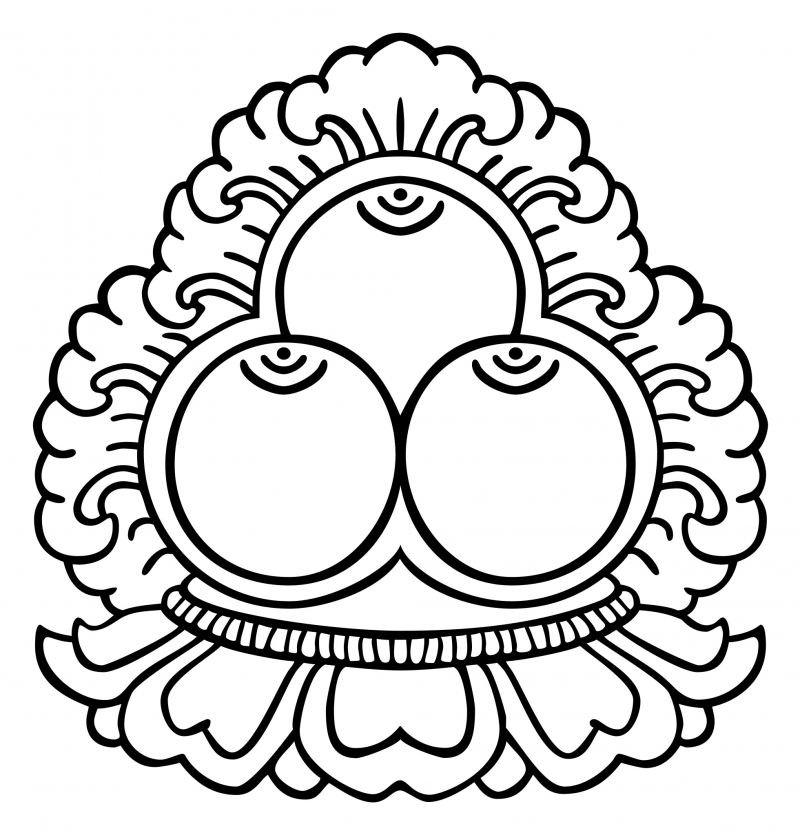
Photo by https://commons.wikimedia.org/wiki/File:Three_Jewels_symbol_B%26W.svg 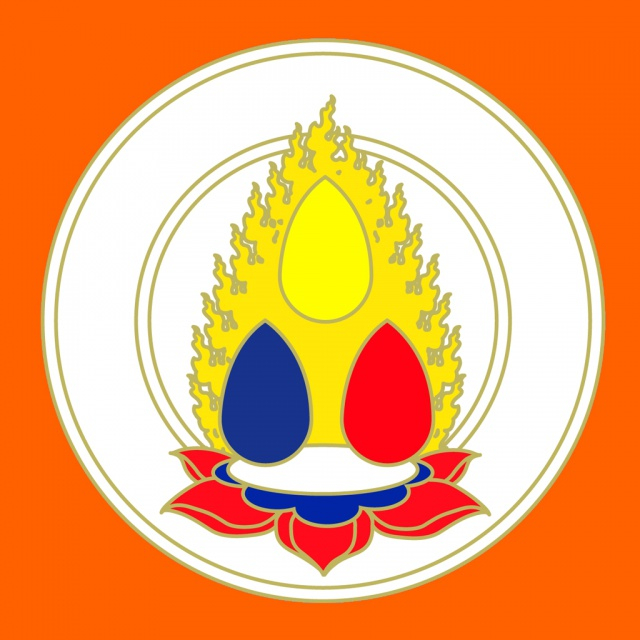
Photo by https://thebuddhistcentre.com/liaison -
Parasols, or sunshades, are significant symbols in Buddhism, representing protection, wisdom, and spiritual authority. They are often depicted in Buddhist art and iconography, adorning the Buddha, bodhisattvas, and other revered figures.
In Buddhism, the parasol symbolizes protection from the scorching heat of suffering and the defilements of the mind. It represents the Buddha's teachings, which provide shade from ignorance, hatred, and delusion, guiding practitioners towards enlightenment. The parasol's expansive canopy symbolizes the vastness of wisdom and spiritual attainment. It represents the Buddha's profound understanding of reality and his ability to guide others towards liberation.
Parasols are also symbols of spiritual authority and power. They are often carried by bodhisattvas, enlightened beings who postpone their own nirvana to help others achieve enlightenment. The parasol represents their compassion and their ability to protect and guide others on the path to enlightenment.
The parasol is used in a variety of Buddhist ceremonies and rituals. It is also used as a decorative element in Buddhist temples and monasteries. Parasols hold profound symbolism in Buddhism, representing protection from suffering, wisdom, and spiritual authority. They serve as reminders of the Buddha's teachings and the path to enlightenment, guiding practitioners on their journey towards liberation.
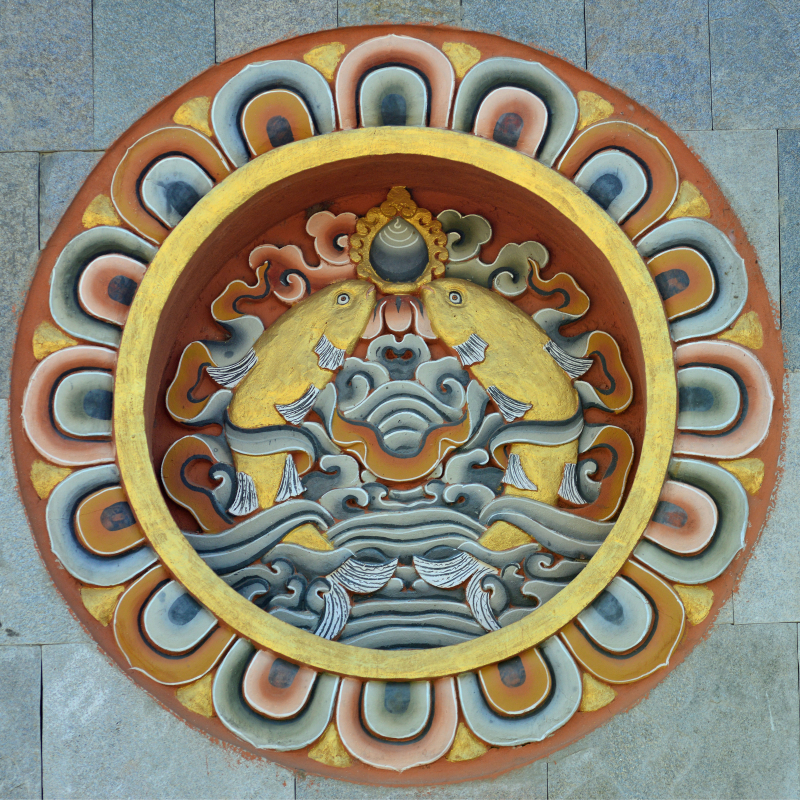
Photo by https://commons.wikimedia.org/wiki/File:Ashtamangala_JDWNRH_Fishes.jpg 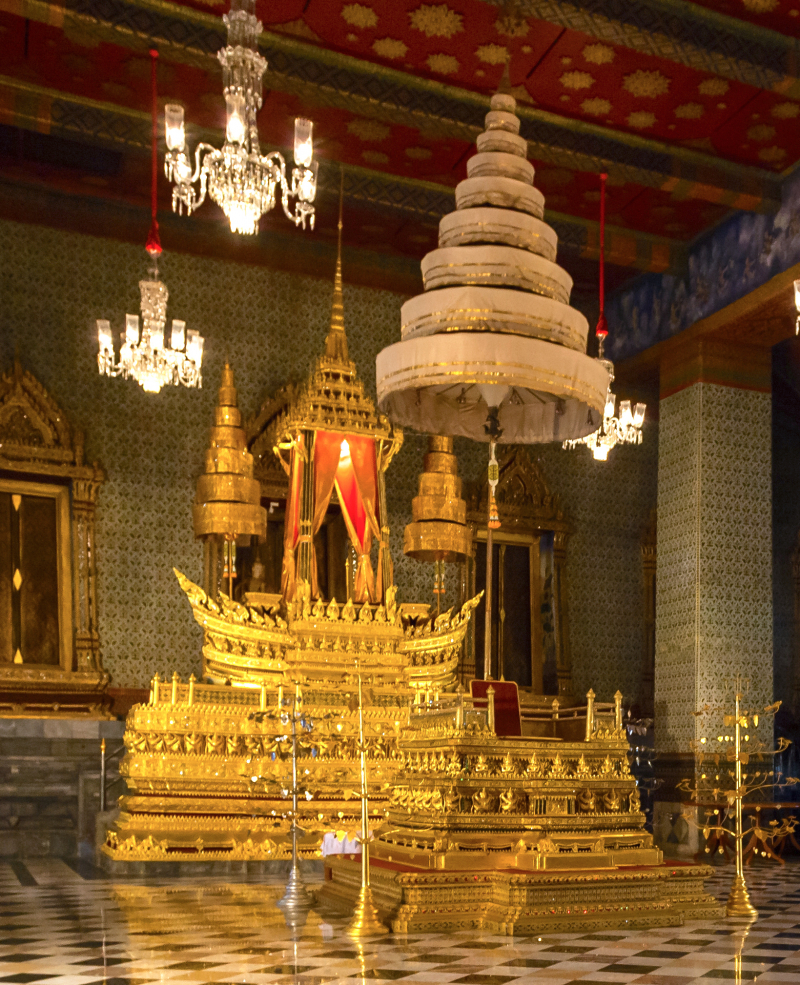
Photo by https://en.wikipedia.org/wiki/Royal_Nine-Tiered_Umbrella -
The Endless Knot, also known as the Eternal Knot, is a symbol of enlightenment, the interconnectedness of all things, and the cyclical nature of existence in Buddhism. It is one of the Eight Auspicious Symbols of Buddhism, and it is often depicted in Buddhist art and architecture.
The Endless Knot is made up of six intertwined loops, which represent the six perfections of generosity, morality, patience, perseverance, concentration, and wisdom. The continuous loops of the knot symbolize the unending nature of the cycle of rebirth and the potential for liberation from suffering through spiritual practice.
Moreover, the Endless Knot seen as a symbol of the interconnectedness of all things. The knot's six loops are said to represent the six realms of existence in Buddhism, and the way they are intertwined shows how all beings are interconnected and interdependent.The Endless Knot is used in a variety of Buddhist ceremonies and rituals. It is also used as a decorative element in Buddhist temples and monasteries. This is a common motif in Buddhist art. It is often depicted in paintings, sculptures, and murals. The knot is also used to decorate Buddhist temples and monasteries. The Endless Knot is also a symbol of good luck and fortune in Buddhist culture. It is often given as a gift to wish someone happiness and prosperity.
The Endless Knot know as one of the most popular Buddhist symbol, representing enlightenment, the interconnectedness of all things, and the cyclical nature of existence. It is used in a variety of Buddhist ceremonies and rituals, and it is a common motif in Buddhist art and architecture.
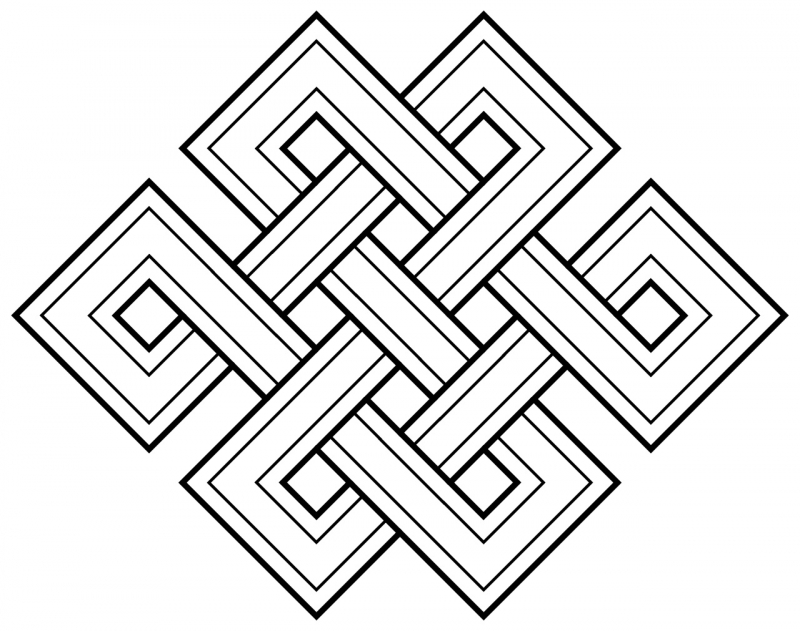
Photo by https://commons.wikimedia.org/wiki/File:Faith_Buddhism_Endless_Knot_3_v2.svg 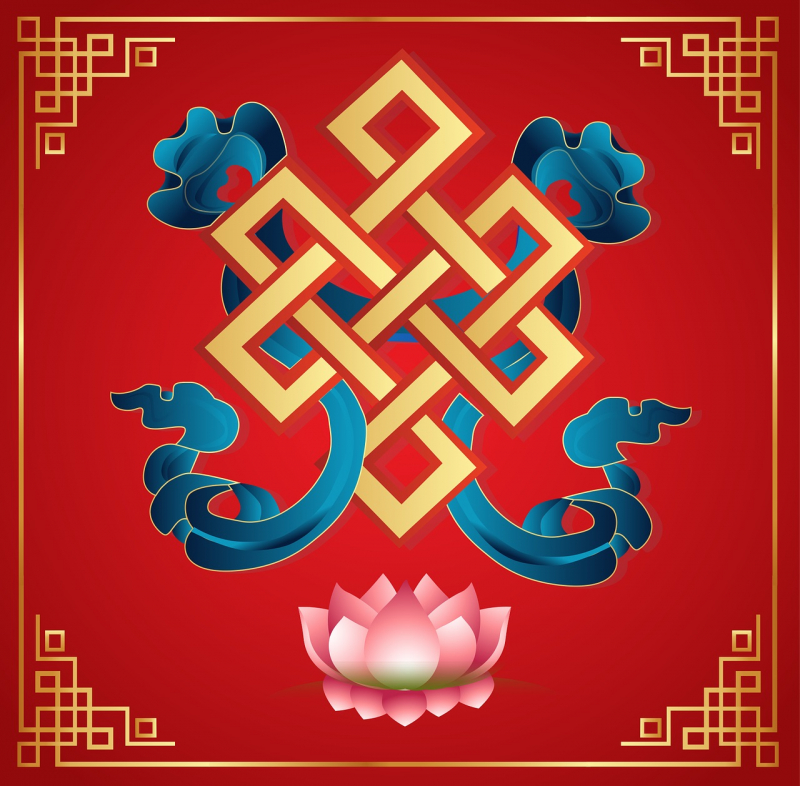
Photo by https://www.needpix.com/photo/894238/vector-auspicious-symbol-mongolia-buddhism-endless-knot-tape-illustration-vector-illustration-graphics -
The conch shell is a significant symbol in Buddhism, representing the Buddha's voice, the awakening of wisdom, and the call to the Dharma. It is often depicted in Buddhist art and architecture and is used in a variety of Buddhist ceremonies and rituals.
In ancient times, the conch shell is often used to represent the Buddha's voice, which is said to be like the sound of thunder. The conch shell's deep, resonant sound is believed to be able to awaken people from their ignorance and inspire them to follow the path to enlightenment. This is also a symbol of the awakening of wisdom. The spiral shape of the conch shell is said to represent the unfolding of wisdom.
The conch shell is used in a variety of Buddhist ceremonies and rituals. It is often used to announce the start of a ceremony or to signal the arrival of a teacher. The conch shell is also used in meditation practice, as its sound is believed to be able to help practitioners focus their minds and cultivate concentration.
The sound produced by the Conch Shell represents the resonance of the Dharma—the Buddha's teachings—reaching out in all directions, guiding beings towards enlightenment. It symbolizes the call to awaken and follow the path of truth and compassion.

Photo by https://www.flickr.com/photos/19779889@N00/53227517996 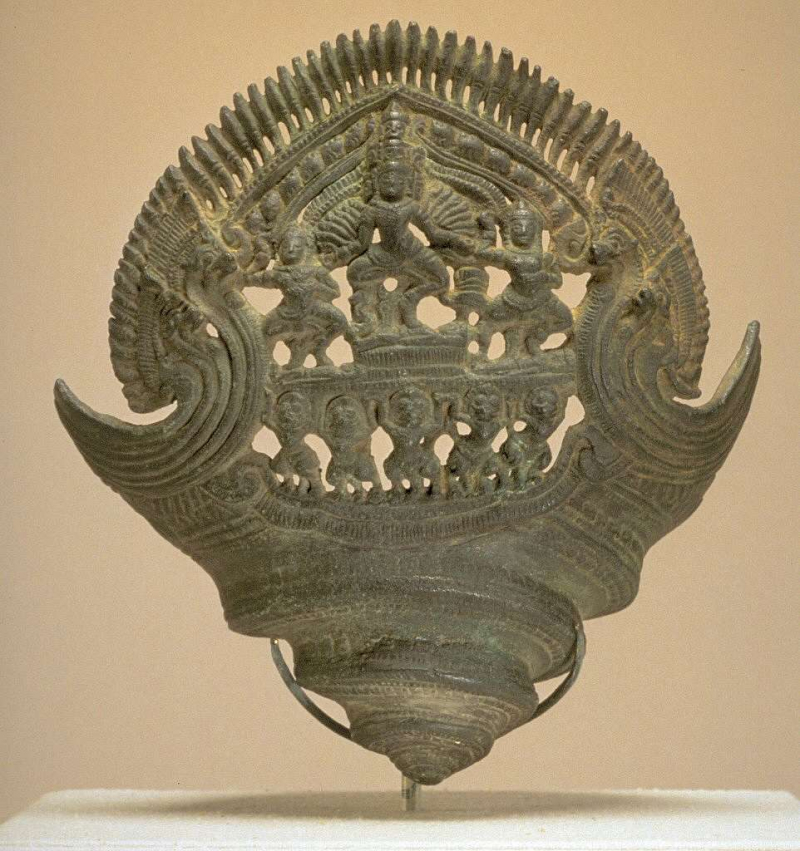
Photo by https://picryl.com/media/cambodian-stand-for-a-ritual-conch-shell-walters-542536-923bcf -
In Buddhism, the symbol of the Golden Fish holds special significance, representing good fortune, abundance, and freedom. These fish are often depicted in pairs, facing each other and sometimes with intertwined tails, swimming gracefully through the waters.
These fish symbolize fertility and the endless cycle of life, as the fish are known for their prolific naturally, producing many offspring. Their pairing suggests harmony and conjugal bliss, reflecting the ideal relationship between a couple in Buddhist teachings. Additionally, the Golden Fish represent fearlessness and courage. Just as fish fearlessly navigate through water, Buddhists aim to move through the "ocean of suffering" without fear, guided by the teachings of the Buddha.
Moreover, the fish symbolize freedom from the constraints of the material world. Fish glide effortlessly in water, analogous to individuals striving to attain spiritual liberation from worldly attachments and desires.In Tibetan Buddhism, the Golden Fish are one of the Eight Auspicious Symbols, signifying abundance, fertility, and happiness. They are often depicted alongside other auspicious symbols, such as the Wheel of Dharma and the Precious Parasol, in religious art and decorations.
The pairing of Golden Fish can also represent duality, such as the balance between opposing forces or the harmony between wisdom and compassion—two essential aspects of the Buddhist path.
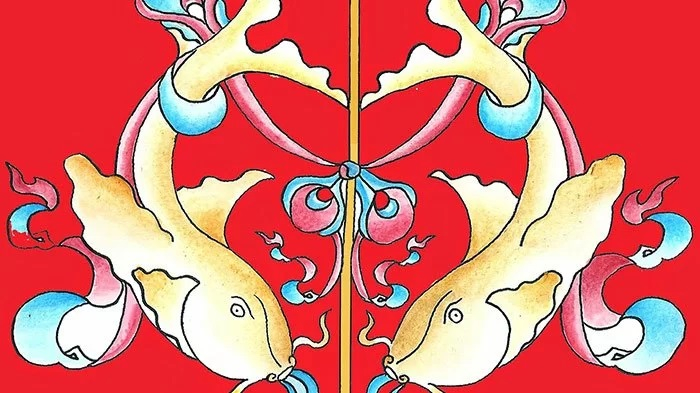
Screenshot of https://www.tibettravel.org/tibetan-buddhism/8-auspicious-symbols-of-tibetan-buddhism.html 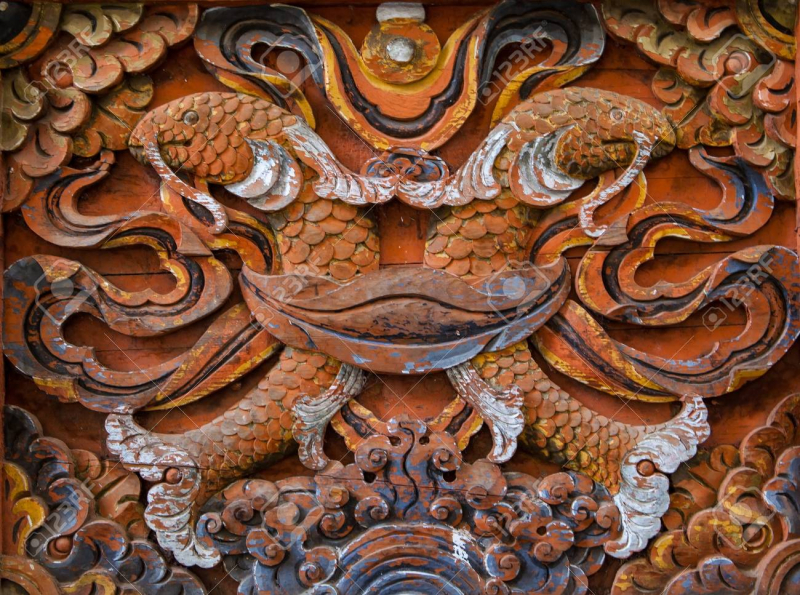
Screenshot of https://www.123rf.com/photo_92396540_pair-of-golden-fish-is-one-of-the-eight-tibetan-auspicious-symbols-in-buddhism-the-fish-symbolize.html -
The Victory Banner, known as "Dhvaja" in Sanskrit, is a powerful symbol representing triumph over obstacles—both internal and external. It stands as a testament to the victory of wisdom over ignorance, compassion over hatred, and enlightenment over delusion.
Depicted as a tall staff with a flowing banner, the Victory Banner symbolizes the success of Buddha's teachings and the attainment of enlightenment. It signifies the overcoming of adversities, challenges, and negative forces along the path to spiritual awakening.
This symbol is often seen in stupas, temples, and Buddhist art, reminding practitioners of the ultimate triumph of virtue and righteousness. It serves as an inspiration to persevere through difficulties, cultivating inner strength and resilience.
The Victory Banner also represents the Buddha's victory over the obstacles of desire, attachment, and the delusions of the mind. Its presence in Buddhist imagery serves as a reminder of the potential within each individual to conquer their own inner battles and achieve spiritual liberation.
In essence, the Victory Banner serves as a beacon of hope, inspiring believers to overcome challenges on the path to enlightenment and to celebrate the victories achieved through spiritual growth and understanding.

Photo on Wikimedia Commons (https://commons.wikimedia.org/wiki/File:Rewalsar-Mandala-Tempel_Zangdok_Palri-14-Morgenstimmung-gje.jpg) 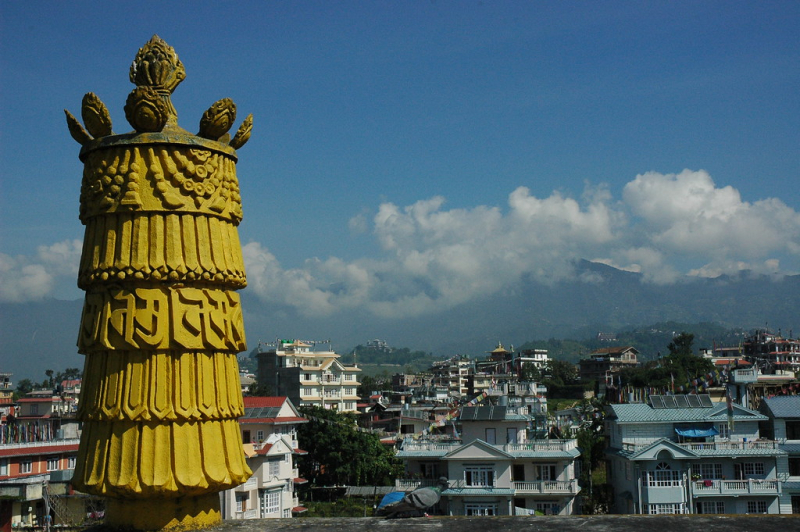
Photo by https://www.flickr.com/photos/wonderlane/2077103818 -
In Buddhism, the Vajra, also known as the Dorje in Tibetan, is a symbol representing both indestructibility and the thunderbolt, signifying enlightenment's unshakable nature. Shaped like a scepter or a diamond, the Vajra embodies strength, purity, and enlightenment's impenetrable essence.
The Vajra is a tool used by Buddhist deities and practitioners to transform ignorance into wisdom. It signifies the indivisible nature of reality and is often associated with the realization of ultimate truth and the attainment of enlightenment.
In Buddhist rituals, the Vajra is held in ceremonies and meditations, symbolizing both the method and wisdom needed to achieve spiritual enlightenment. It is believed to be unbreakable, representing the unyielding nature of truth and the awakened mind.
Moreover, the Vajra represents the unstoppable force of compassion. Just as a thunderbolt can swiftly cut through obstacles, compassion, represented by the Vajra, can effortlessly conquer ignorance and bring about profound transformation.
In Tibetan Buddhism, the Vajra is one of the most important ritual objects, used in ceremonies to evoke spiritual power and clarity. Its symbolic significance extends to the balance between compassion (symbolized by the bell) and wisdom (symbolized by the Vajra), highlighting their inseparable unity on the path to enlightenment.

Photo by https://commons.wikimedia.org/wiki/File:Vajra,_Tibet,_11th-12th_century,_iron_and_brass_-_Berkeley_Art_Museum_and_Pacific_Film_Archive_-_DSC04056.JPG 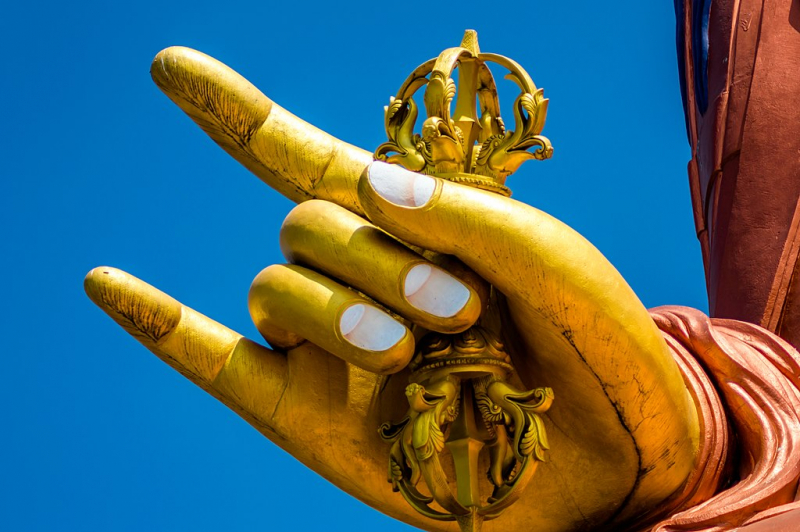
Photo by https://commons.wikimedia.org/wiki/File:Vajra_on_Hands_of_Statue_of_Buddha.jpg -
The Treasure Vase symbolizes abundance, wealth, and the fulfillment of both spiritual and material aspirations. Known as "Bumpa" in Tibetan, this symbol represents the inexhaustible treasures of the Buddha's teachings and the potential for limitless spiritual growth.
Depicted as a vase with a wide belly and a narrow neck, the Treasure Vase is often adorned with jewels or overflowing with various treasures. It symbolizes the repository of spiritual wealth and the capacity to hold boundless blessings.
The Treasure Vase embodies the concept of generosity and the idea that by sharing and giving, one's wealth and blessings multiply rather than diminish. It signifies the richness of the Buddhist teachings and the immeasurable value found within them.
Furthermore, the Treasure Vase represents the idea of fulfillment and completeness. It symbolizes the capacity to fulfill desires, not just in a material sense but also in achieving contentment, happiness, and spiritual fulfillment.
In Tibetan Buddhist rituals, the Treasure Vase is used to symbolize the offering of material and spiritual abundance. It is believed that by meditating on the Treasure Vase, practitioners can invoke blessings and increase their own capacity for generosity and abundance, fostering both inner and outer wealth.
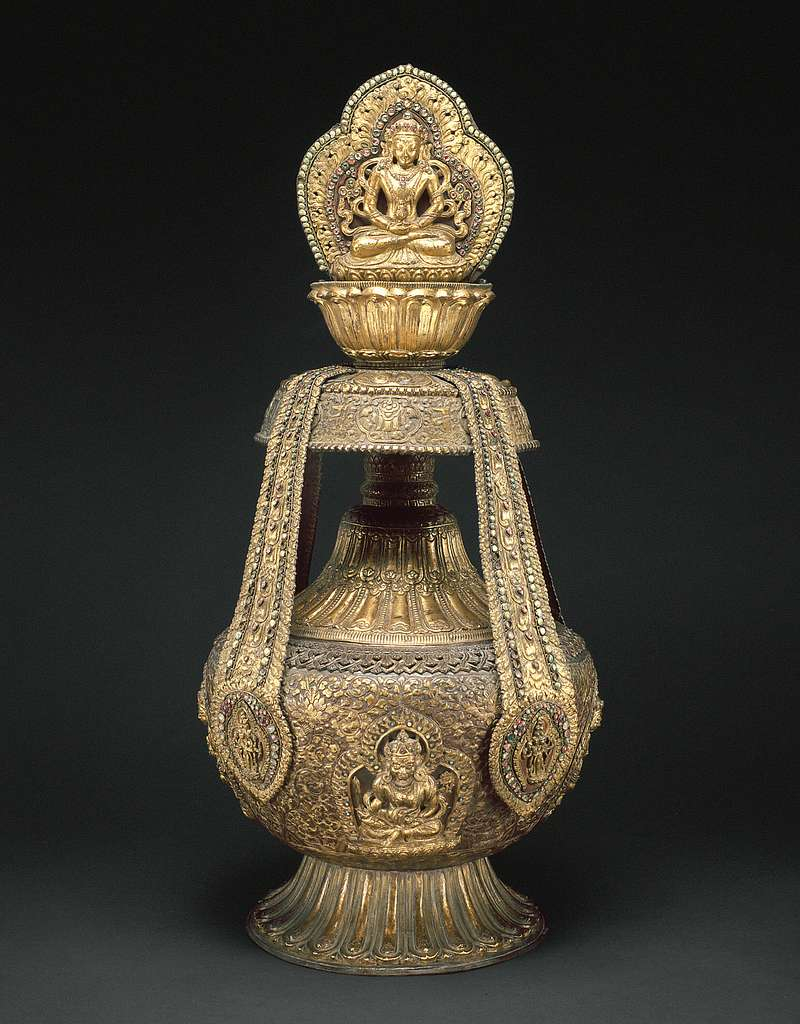
Photo by https://picryl.com/media/vase-of-longevity-kalasha-with-buddha-amitabha-nepal-17th-century-0fb3ed 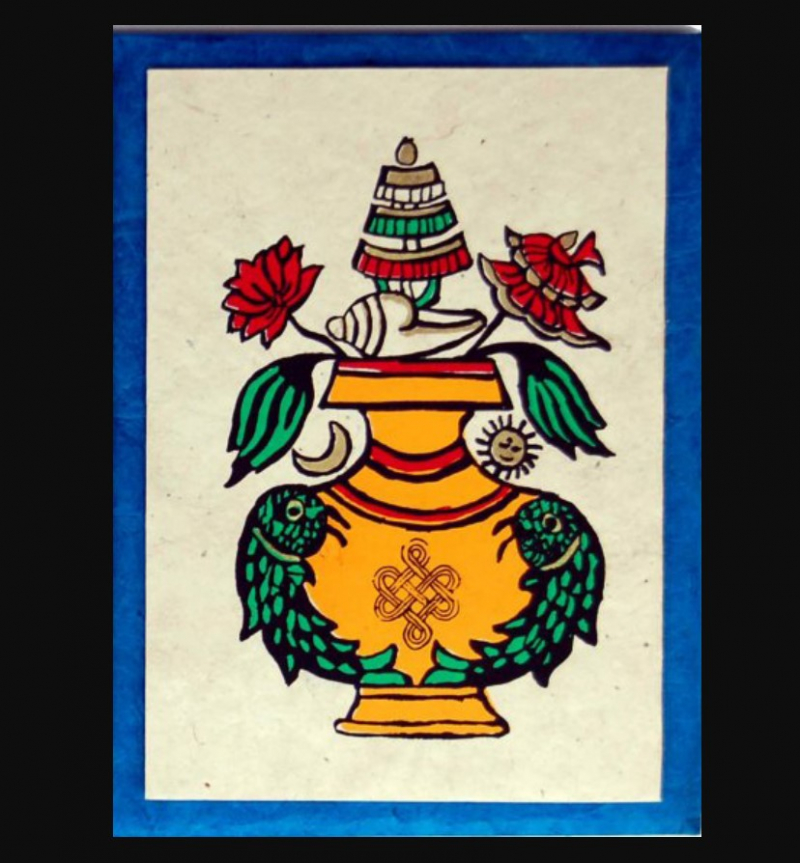
Screenshot of https://commons.wikimedia.org/wiki/File:Purna-Kalasha-Vase-of-prosperity.jpg -
Mandala is a sacred and intricate symbol representing the universe, both seen and unseen. It is a geometric design often featuring circles, squares, and other shapes, arranged symmetrically around a central point.
Mandalas serve as spiritual maps, guiding practitioners on their journey to enlightenment. They symbolize harmony, unity, and the interconnectedness of all things in existence. The central point of the Mandala represents the essence of Buddha or enlightenment.
Creating and meditating upon Mandalas is a spiritual practice used for focusing the mind and facilitating inner transformation. Artists meticulously construct these designs, sometimes using colored sand or intricate paintings, as a form of meditation and devotion.
Each element and color within the Mandala holds significance. The circles and squares represent different aspects of the universe, while specific colors convey emotions, virtues, or elements of nature.
Furthermore, Mandalas can also depict various realms of existence or stages of spiritual development. They serve as tools for concentration and contemplation, aiding practitioners in achieving a state of heightened awareness and spiritual awakening. The process of creating or contemplating Mandalas is believed to lead to a deeper understanding of oneself and the universe, fostering inner peace, healing, and a connection to the divine.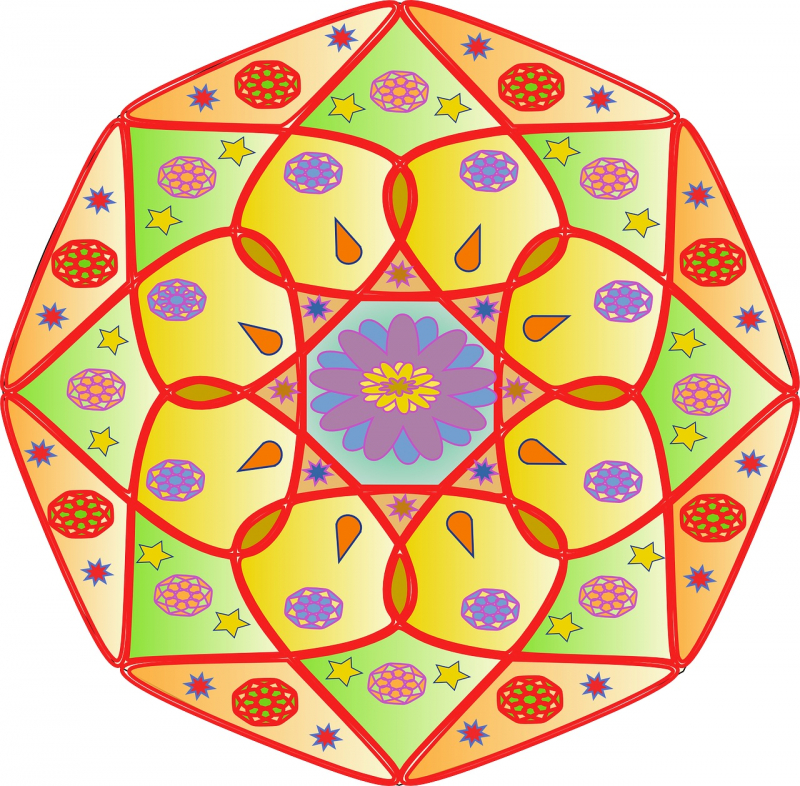
Photo by https://www.needpix.com/photo/94924/mandala-colors-hinduism-buddhism-ritual-symbol-india 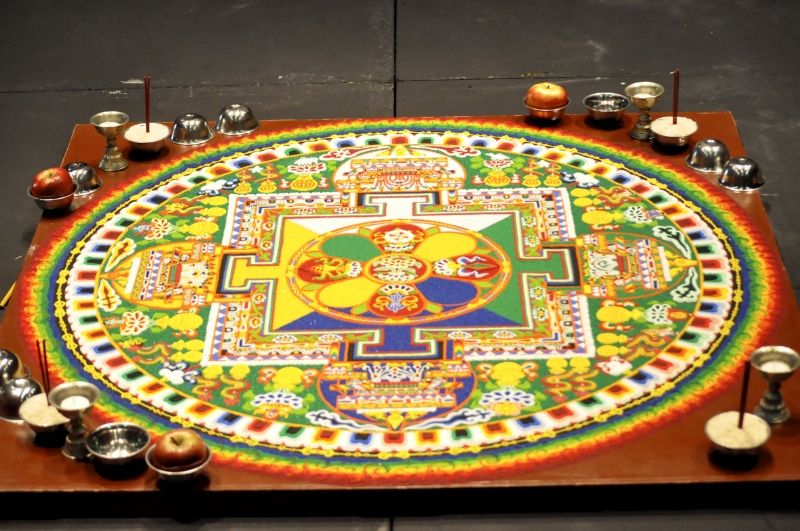
Photo by https://www.worldhistory.org/mandala/ -
In Buddhism, the lion is a symbol of strength, courage, and nobility. Often depicted as the "king of beasts," the lion embodies majesty and power, representing the fearless nature of enlightened beings.
In Buddhist art and teachings, the lion symbolizes the fearless and unwavering nature of the Buddha's teachings, which possess the strength to overcome obstacles and fears. Just as a lion fearlessly roams its territory, the teachings of Buddhism guide practitioners through the journey of life with courage and resilience.
Moreover, the lion represents the power of restraint and control over one's mind and emotions. It serves as a reminder to harness one's inner strength and to cultivate virtues like compassion, wisdom, and patience.
In some Buddhist traditions, lion imagery is used to guard sacred spaces such as temples or stupas. Sculptures or paintings of lions are placed at entrances as protectors, warding off negative influences and symbolizing the strength to resist harmful temptations.
The lion's depiction in Buddhism also signifies the unity of wisdom and compassion. Its presence in various forms of Buddhist art and teachings serves as a reminder of the importance of balancing strength with compassion and fearlessness with kindness on the path to enlightenment.

Photo by https://commons.wikimedia.org/wiki/File:Lion_%28165938297%29.jpeg 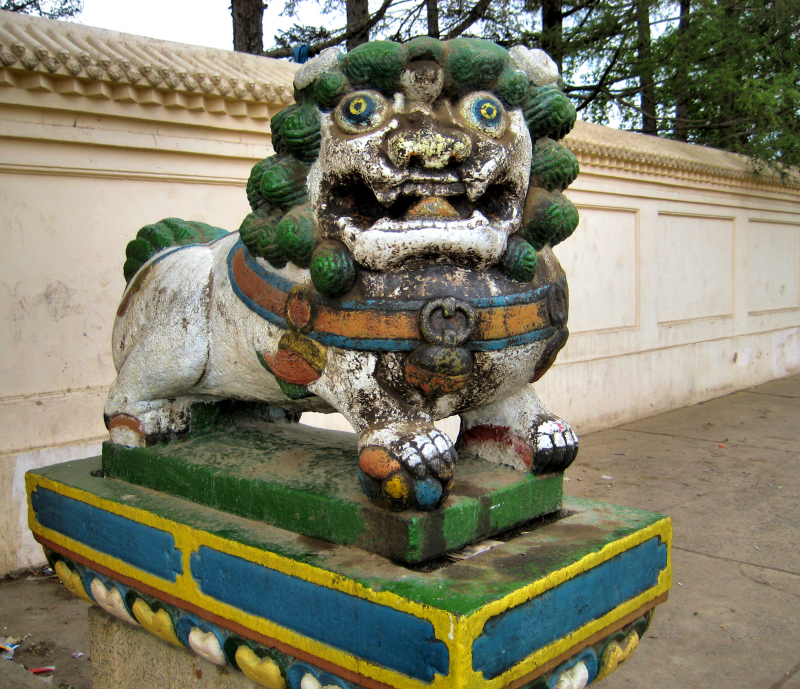
Photo by https://commons.wikimedia.org/wiki/File:Buddhist_lion_%282541312276%29.jpg

















